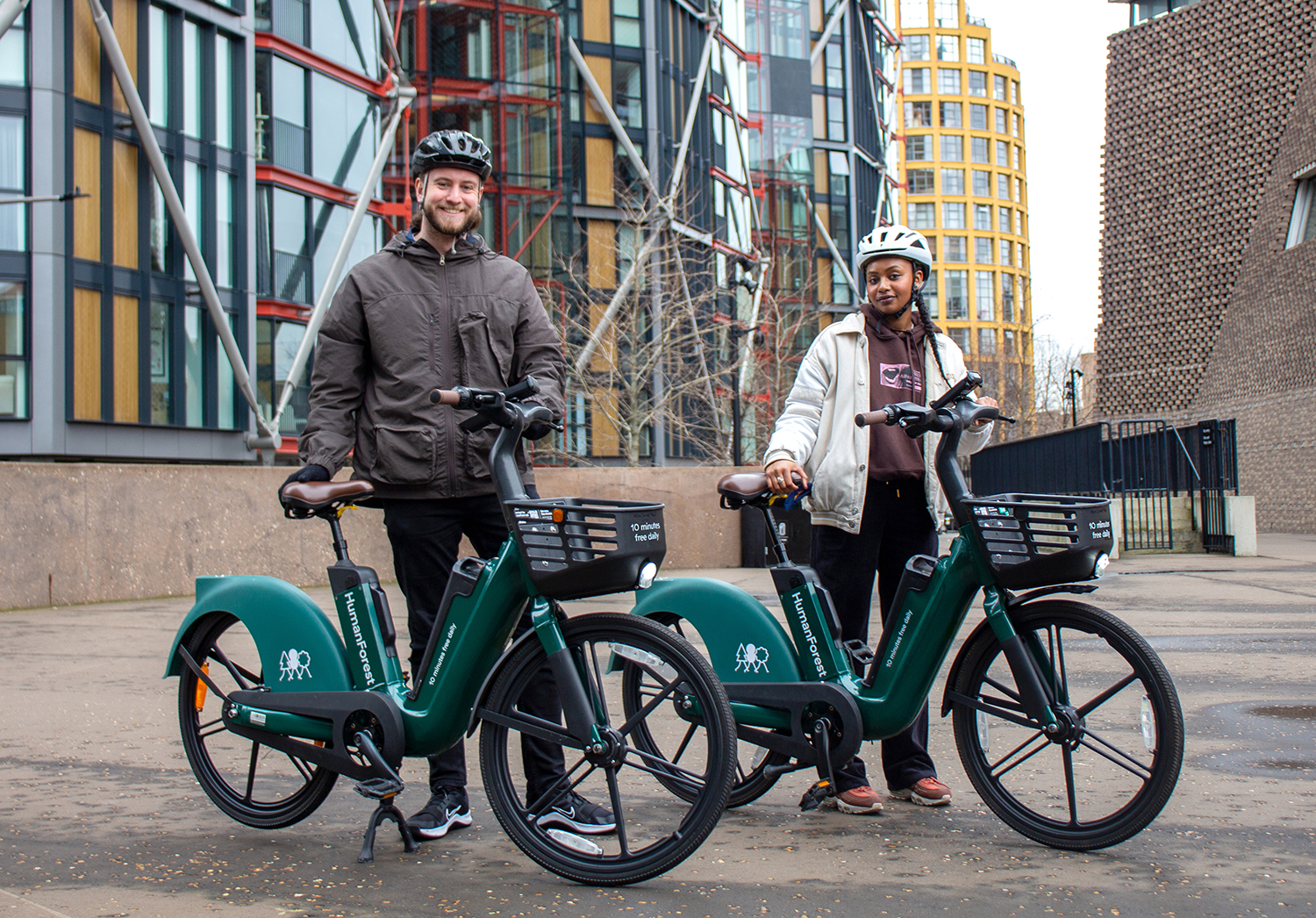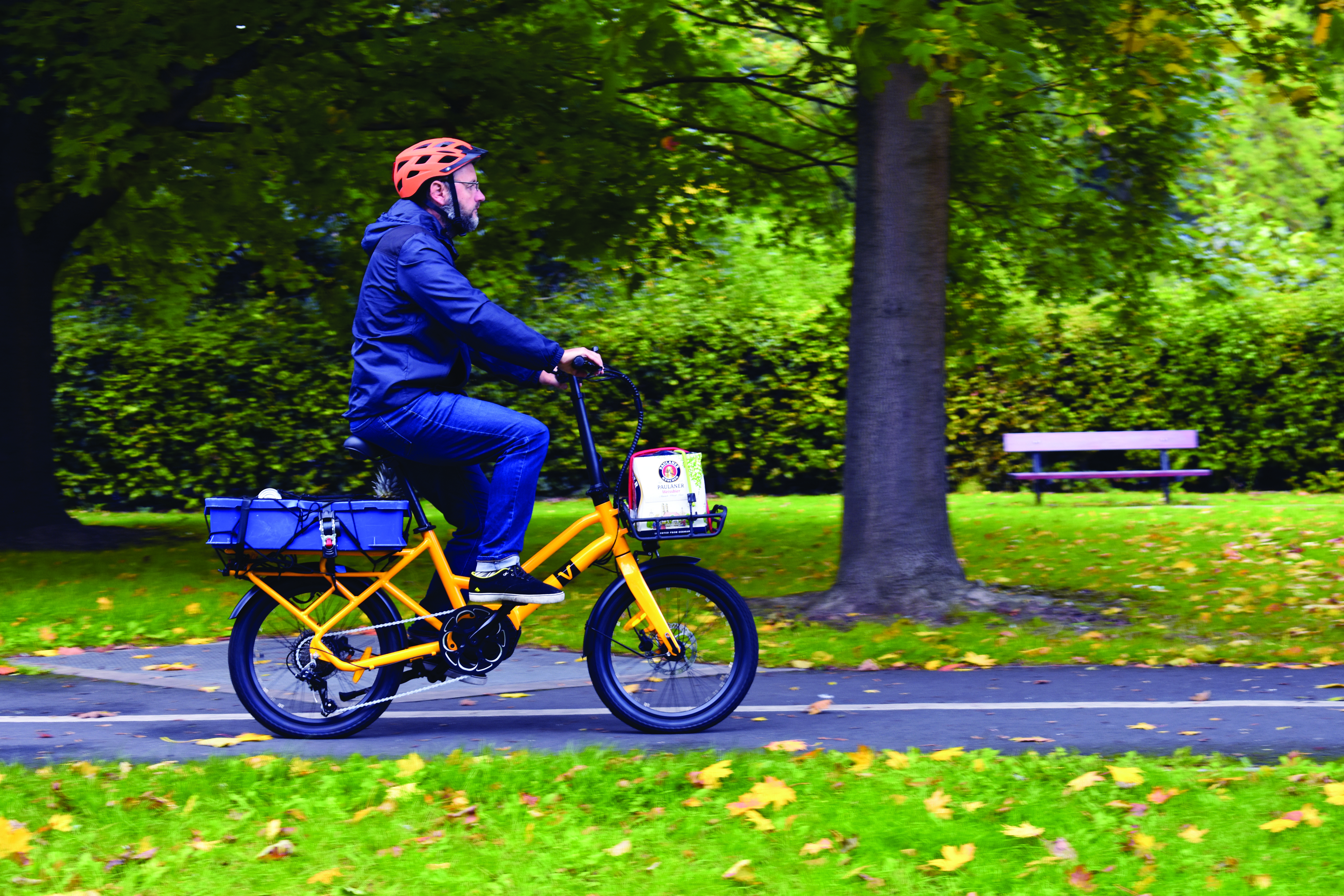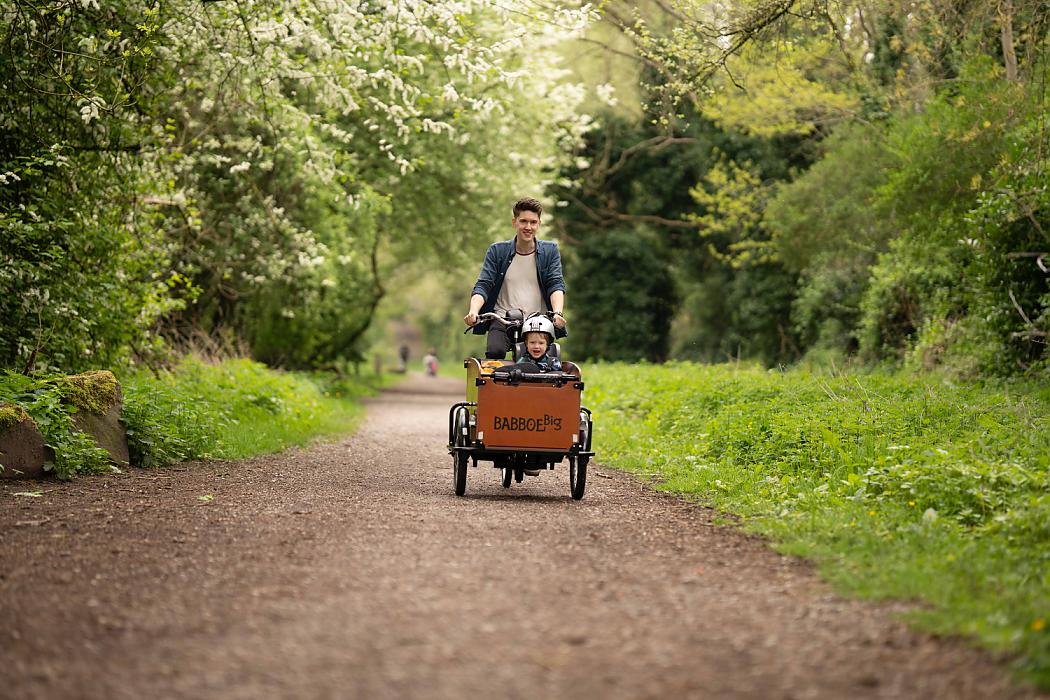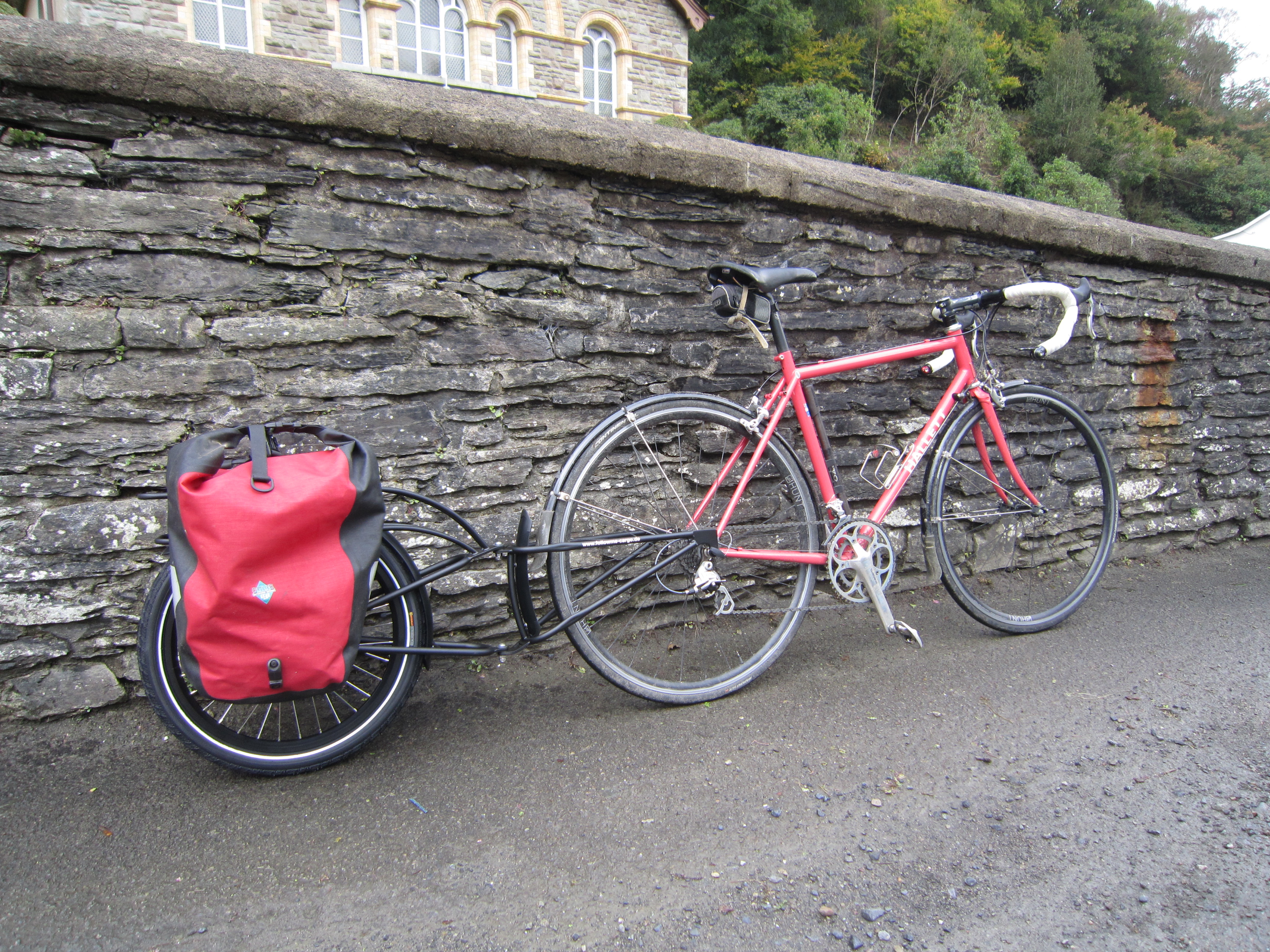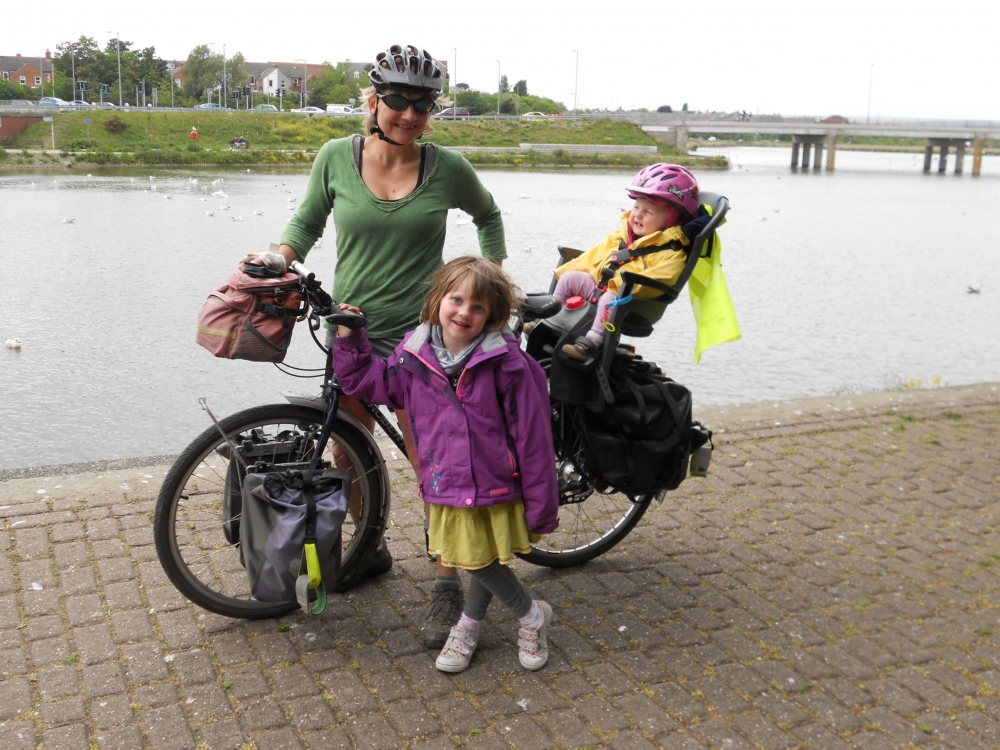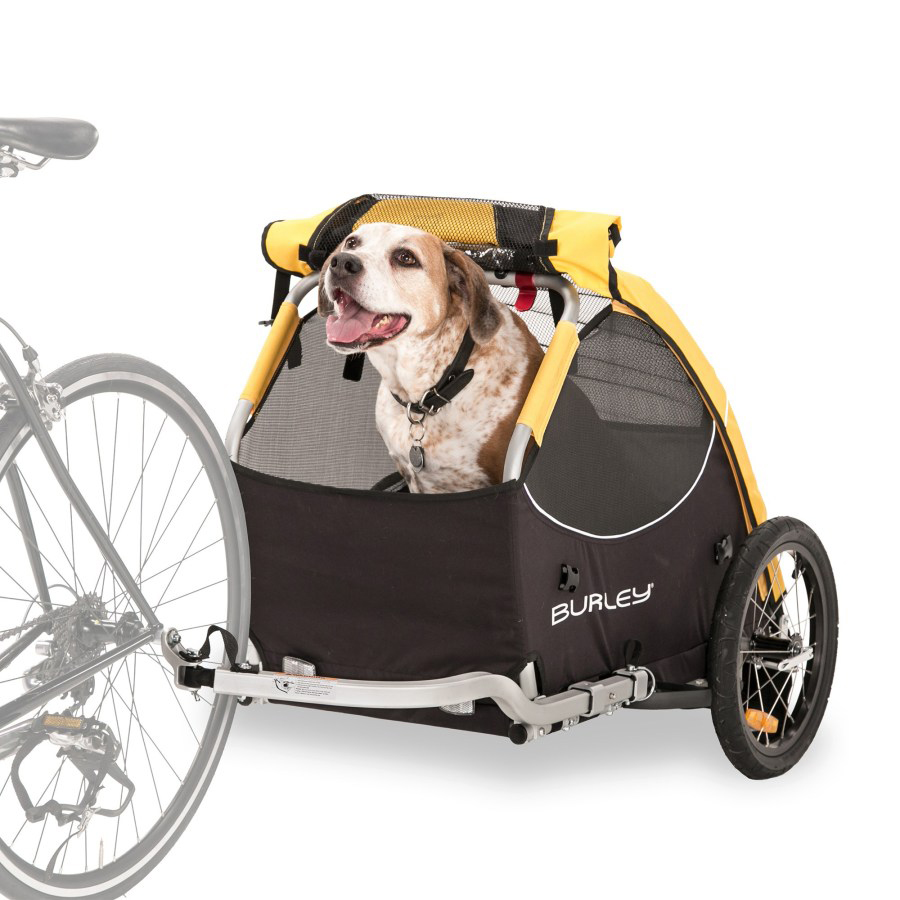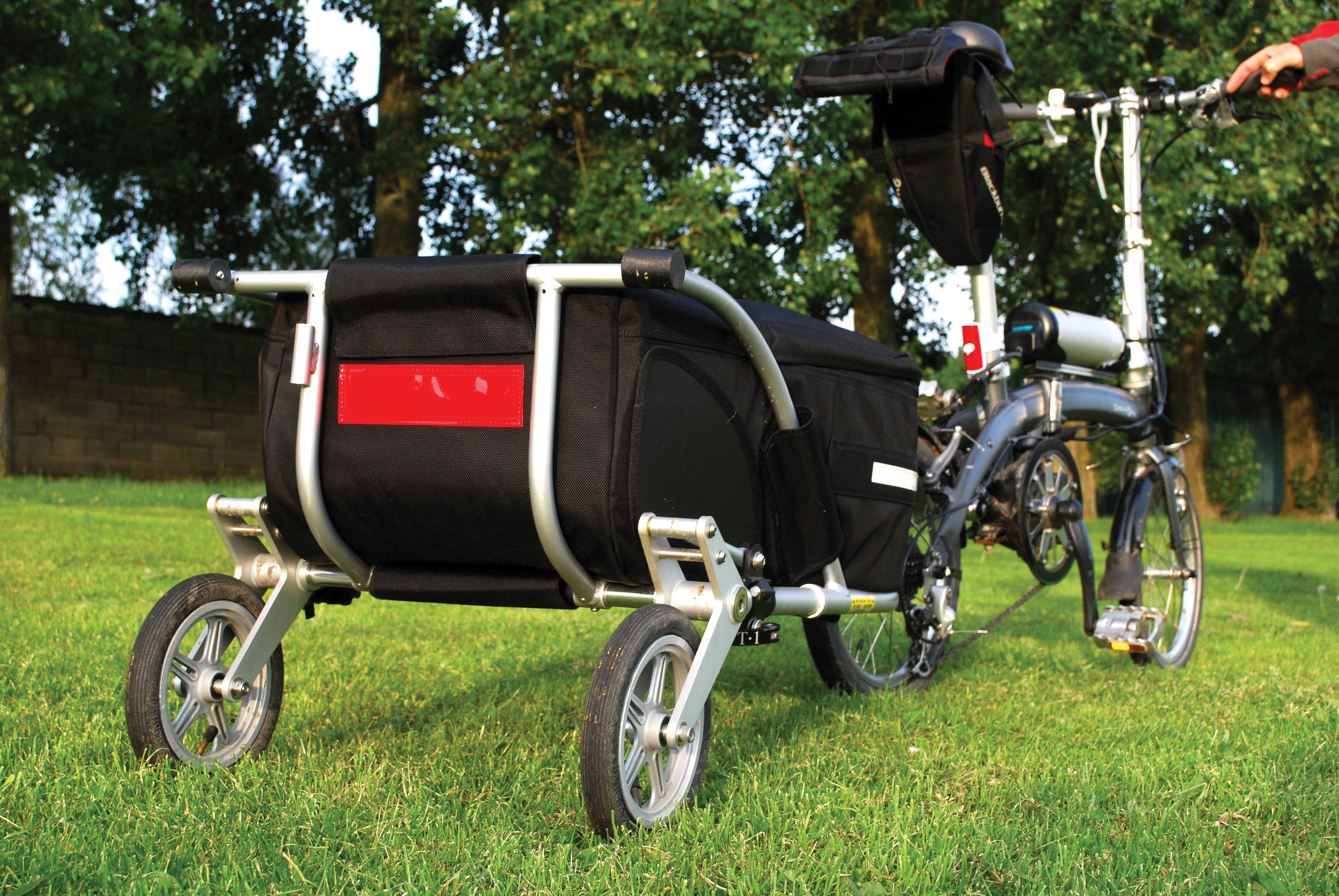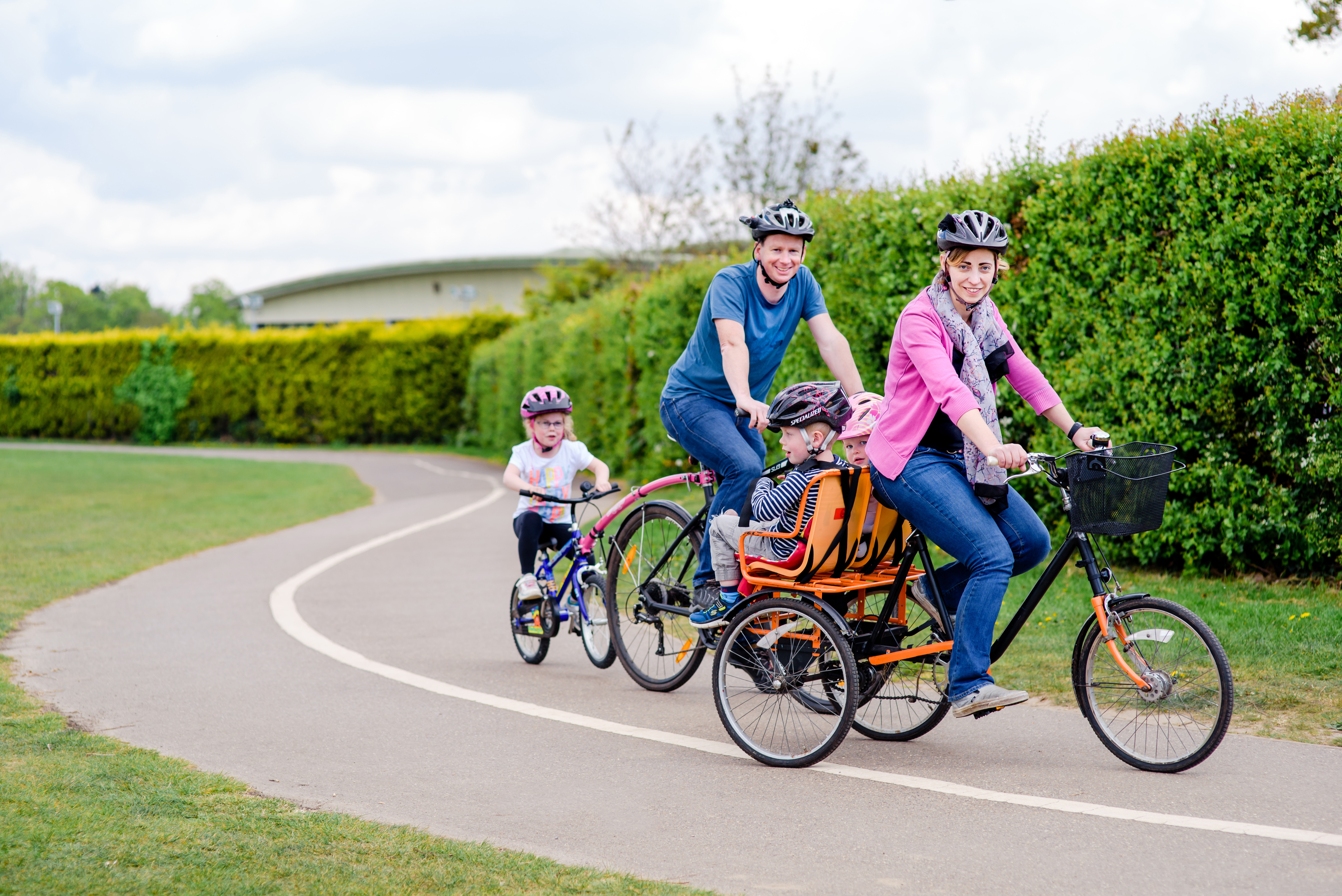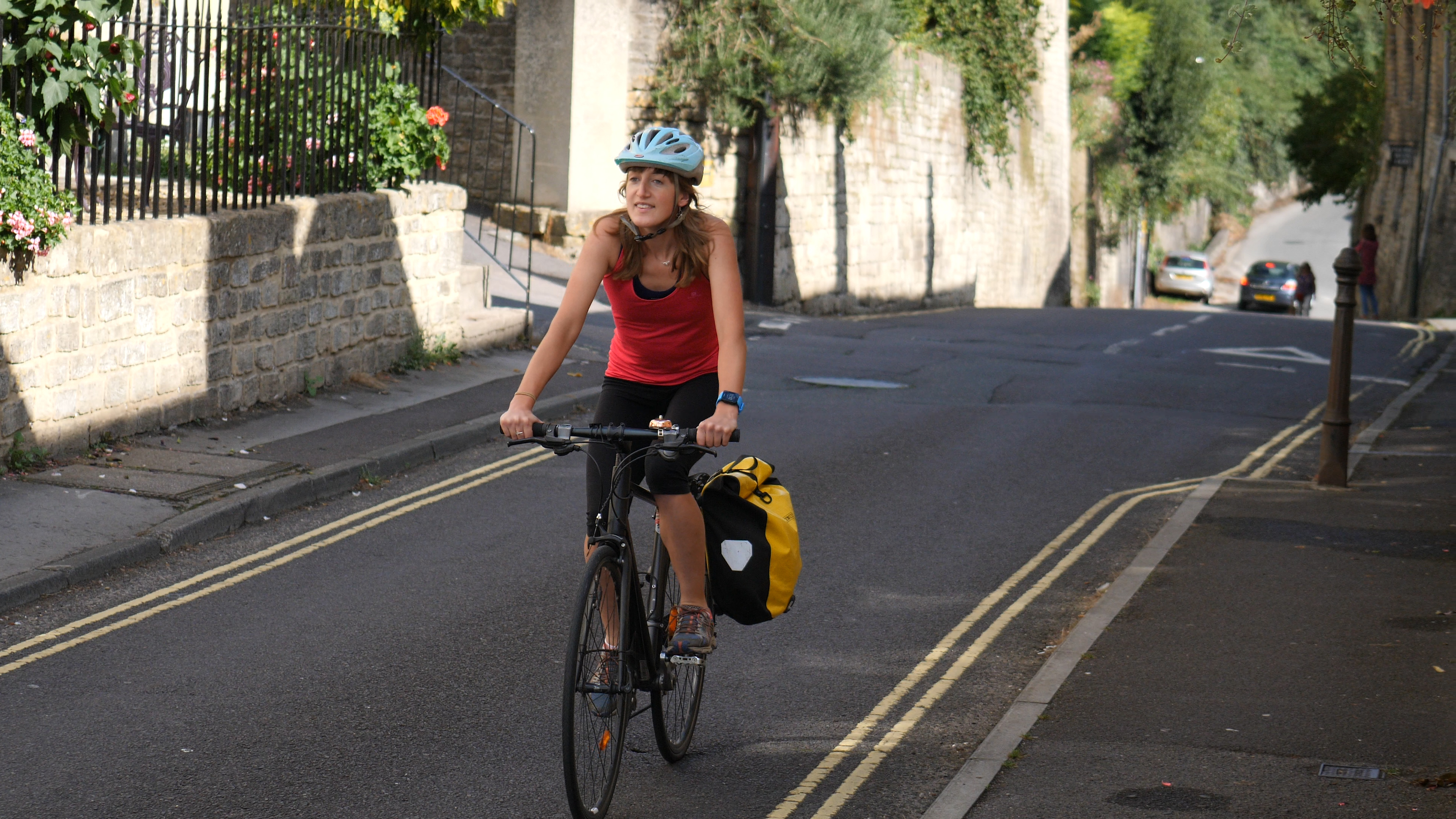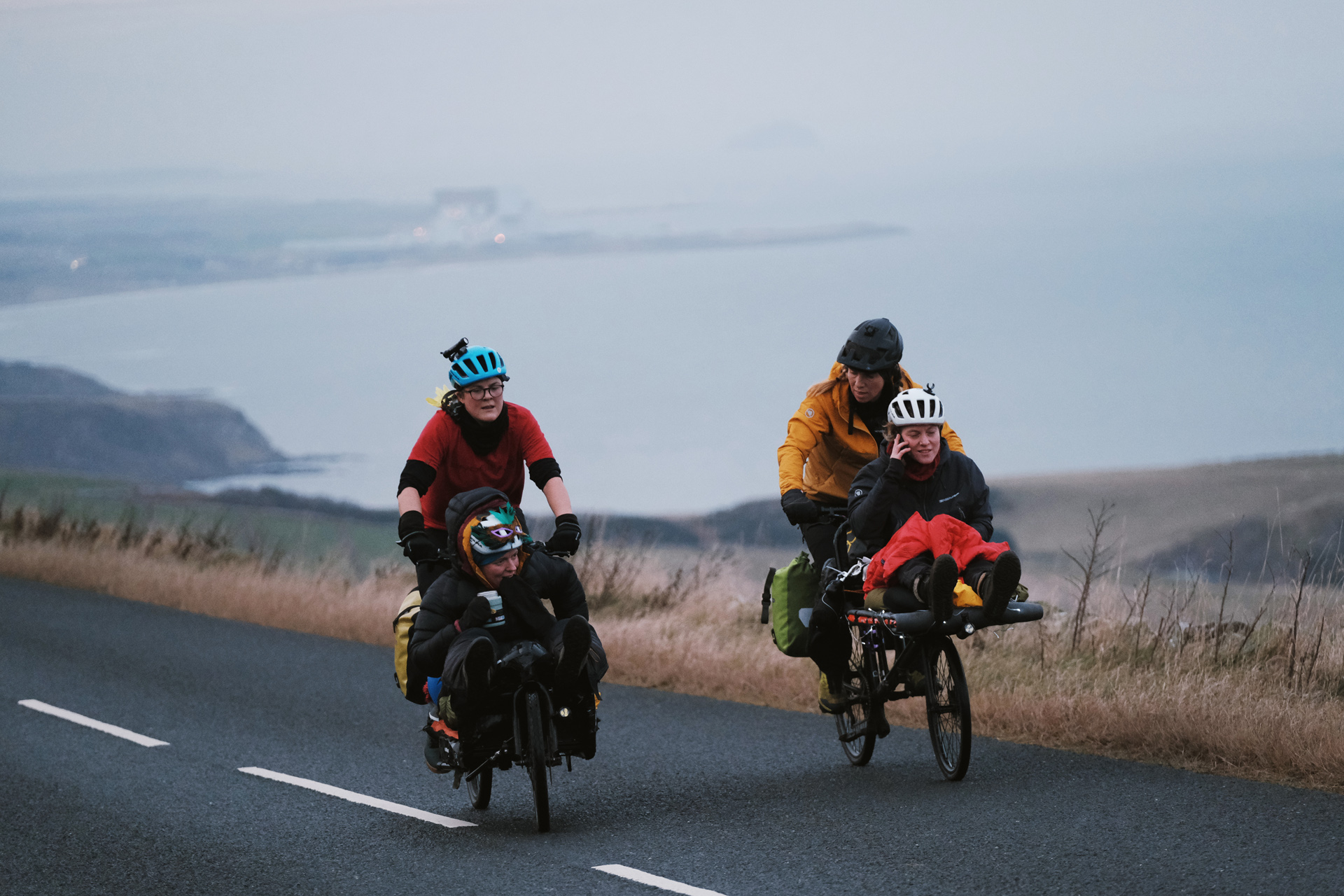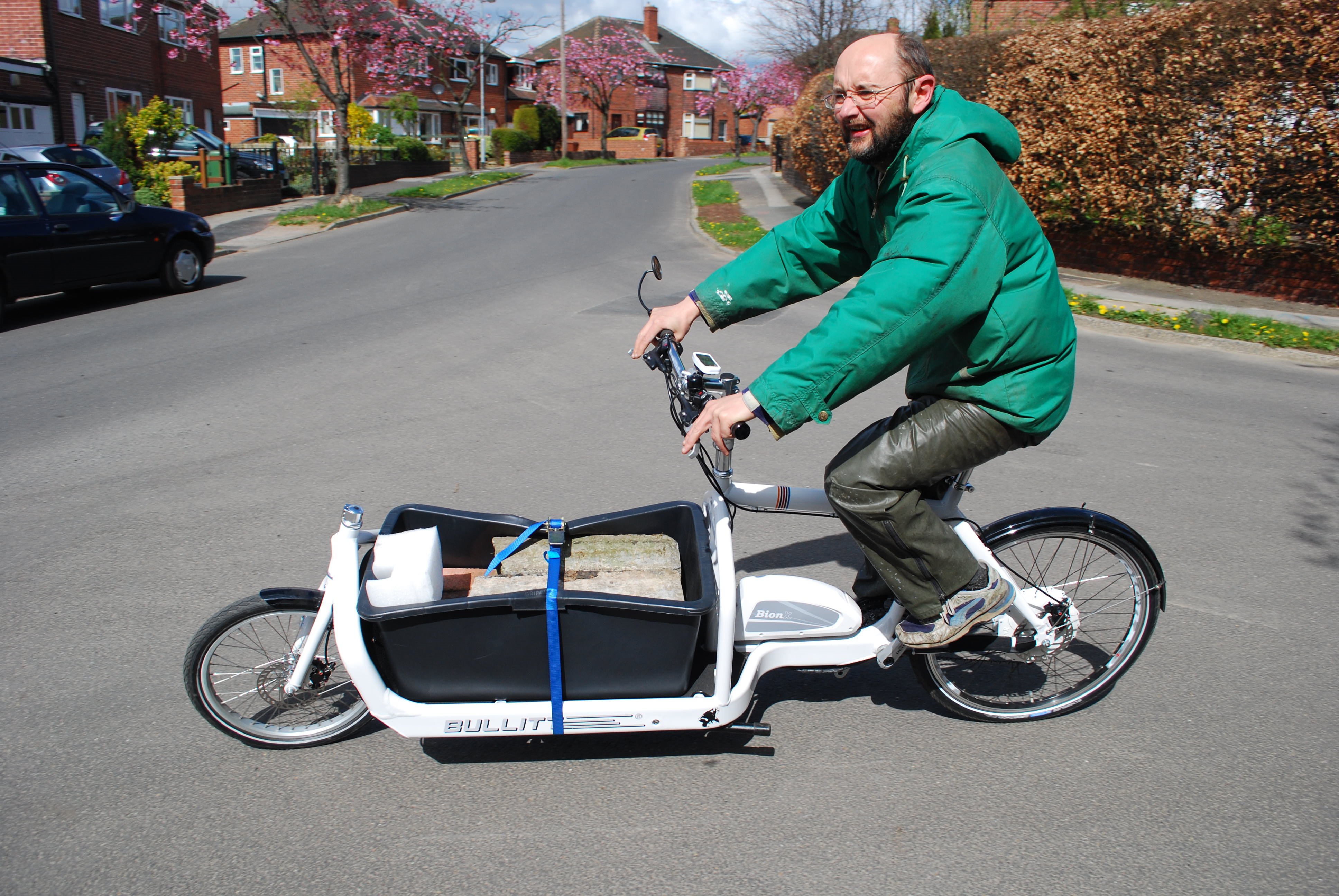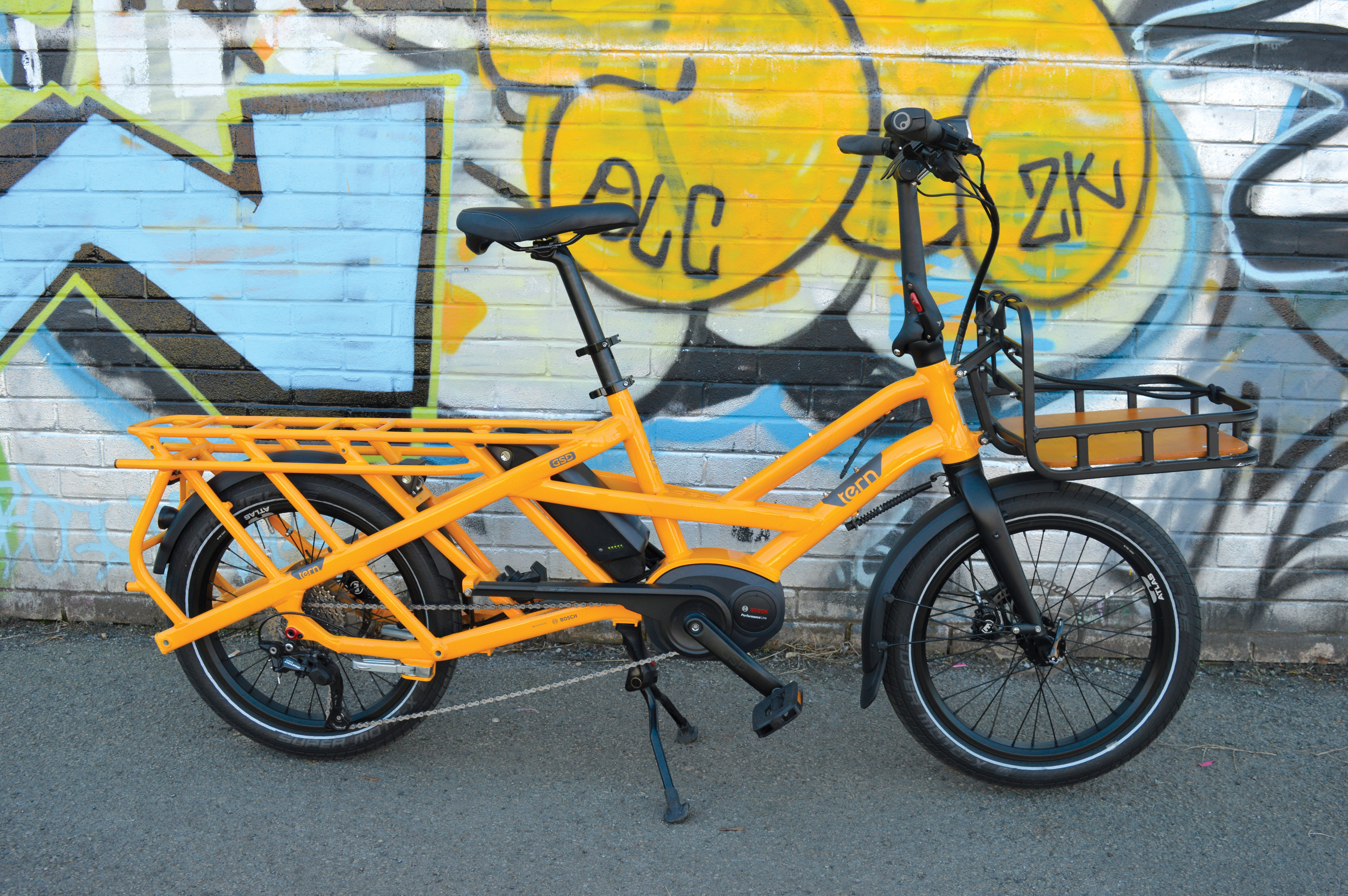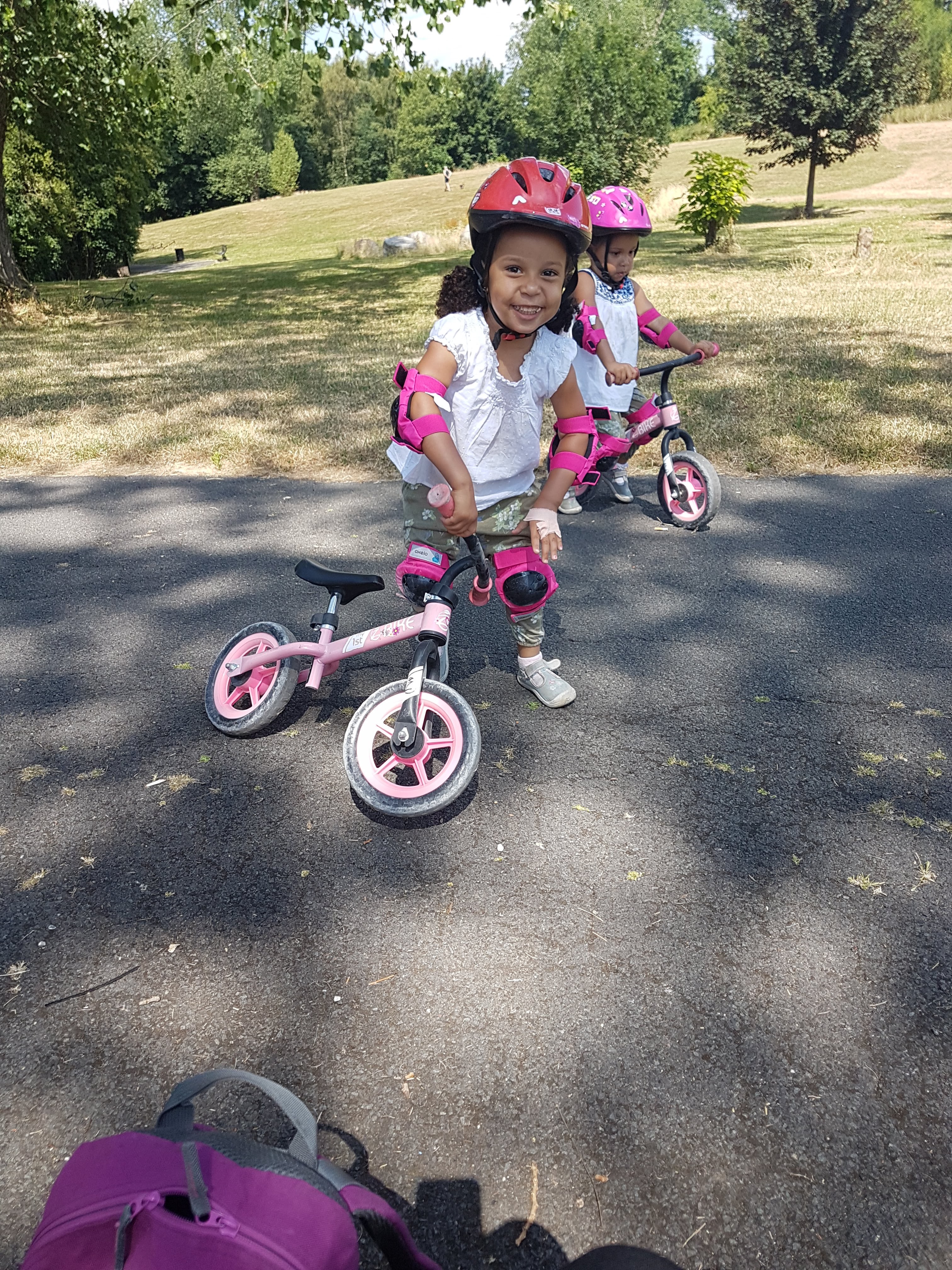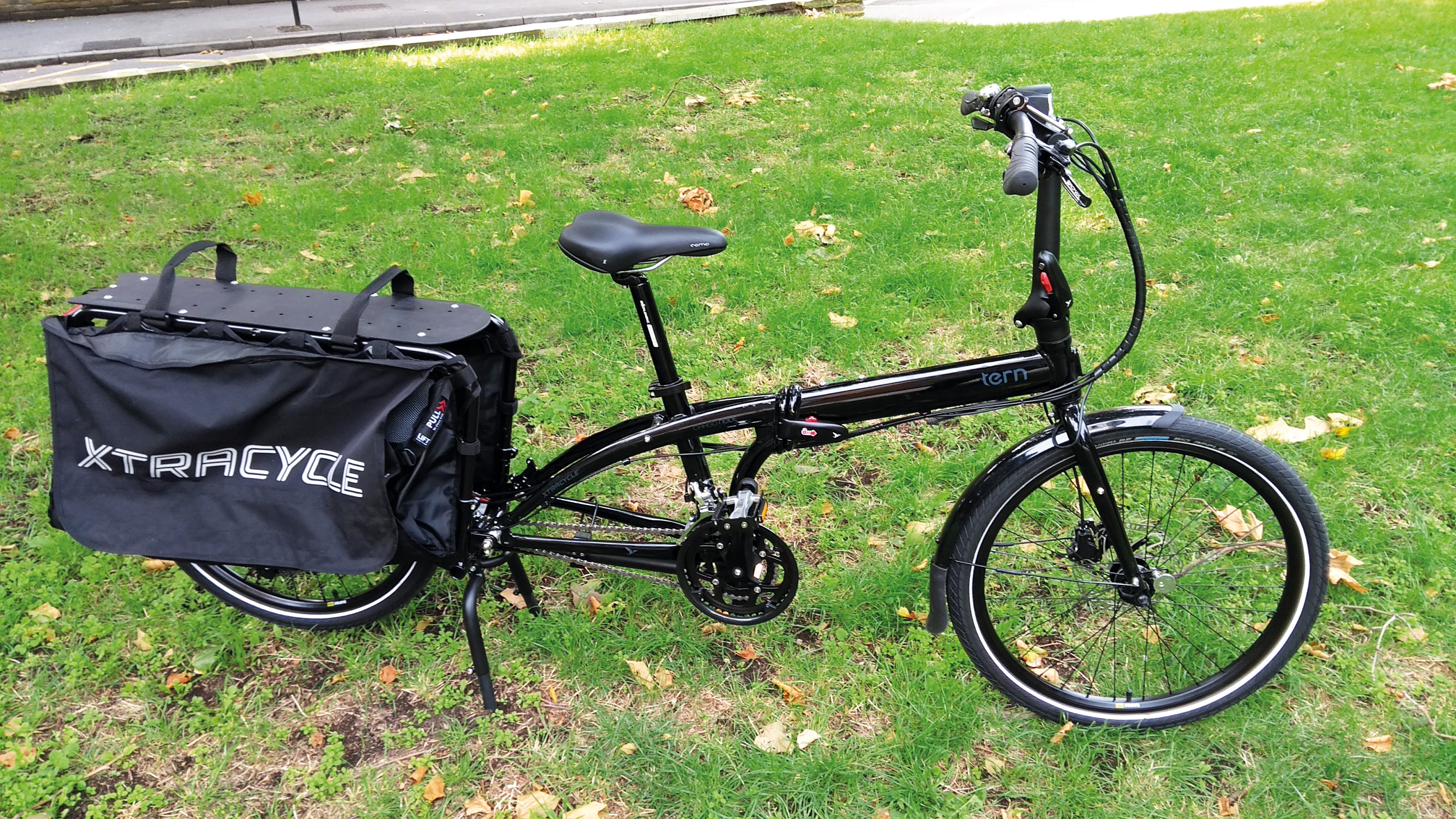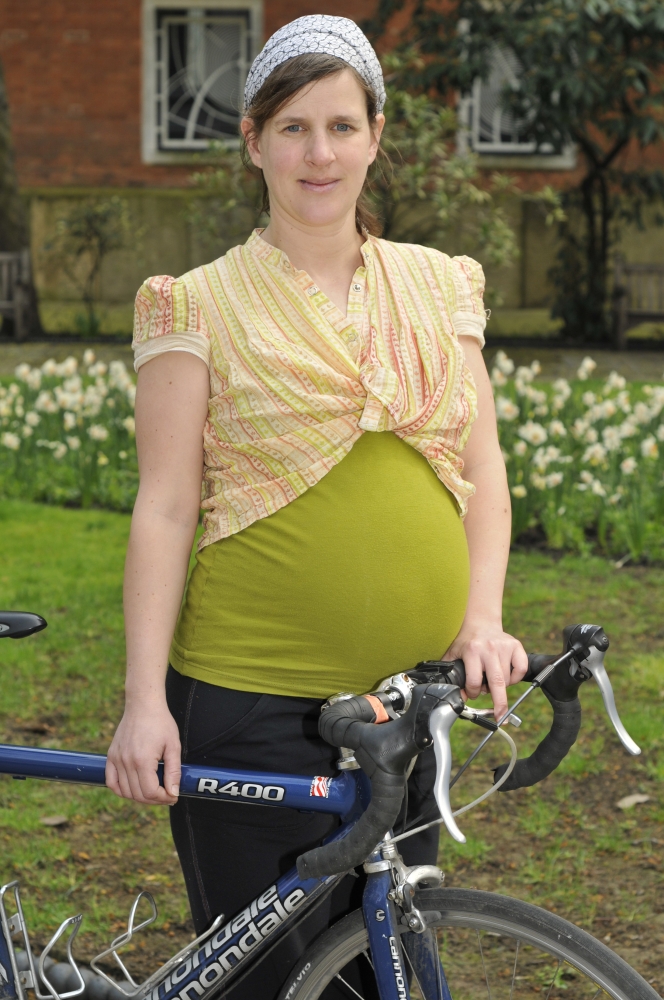Guide to cargo bikes
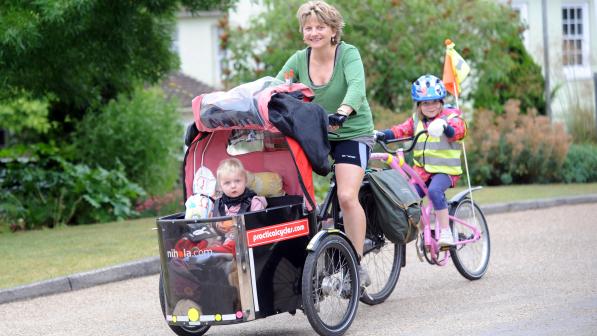
Why cargo bikes?
If you’re looking to get small children around from A to B and you can’t fit them on your regular bike, there are loads of options out there. Or if you’re running a small business like Green Workforce in London, or a courier company like Zedify in various locations in the UK, and you need to get light freight from place to place, it’s definitely worth considering a cargo bike.
Even for trips to the garden centre or the weekly shop, a cargo bike can be a great alternative to a car.
What are cargo bikes?
There are several different types of cargo bike. Broadly, you’re looking at a box-bike, a longtail, a pedicab, other types of trike, and a ‘mini cargo bike’. They all have different niches, and they vary in price from mini cargo bikes at prices similar to the average regular bike, through to several thousands of pounds for pedicabs.
These days many can be fitted with an electric assist option, which you will be thankful for when those unnoticeable inclines you power up on your regular bike turn into irksome hills when loaded up with two kids, their stuff and the weekly shop. You will pay more, but you’ll never look back.
It may also be wise to choose a model that includes all the really useful stuff for true utility vehicles: back racks, mudguards, chaincases, rain tents and so on.
Your cargo bike will be working hard, so choose one with good-quality parts. Hub gears and brakes should be well protected from the elements, and a low frame will make getting on and off that much easier when loaded up.
But first, you need to define what you’ll be carrying: A very young baby? Small children? Older kids? Another adult? Or cargo? What type of cargo? Then, how long will your trips be? Is time of the essence – will you want to remain nippy and manoeuvrable, or would you rather have a three-wheeled vehicle with perhaps a greater capacity but which is likely to be slower?
Very importantly, consider where you will store it. Also have a good idea of your uppermost budget, remembering to factor in the cost of accessories such as rain tents, child seats and high-quality locks.
The best advice is to try out several types to see how they feel to you, and to see how much capacity each actually has. Check out the weight limit including rider and vehicle as well as load. If you have a friend or neighbour who has one, that’s ideal: try theirs and pick their brains about their experiences.
Look for things that will make your life easy, such as a low step-through frame, integrated stand, and well-designed accessories suited to your needs.
There are a number of high street bike shops around the UK that stock cargo bikes, while some outlets specialise in cargo bikes. These include The School Run Centre in Cambridge; Really Useful Bikes outside Bristol; Kids and Family Cycles in Dorset; and London Green Cycles, CarryMe Bikes and The Flying Dutchman in London.
Some even specialise in hand-making their own cargo bikes, such as The Cargobike Company in Derby and Rodford Built Transport Cycles in Bristol.
The best outlets will let you try before you buy, ideally renting one to see how it works practically in your own home or workplace environment. Many of the above mentioned companies such as CarryMe Bikes and The School Run Centre will let you rent a cargo bike to try it out and take the rental cost off your purchase price.
OurBike runs a community cargo bike share scheme in several London boroughs which is operated via an app. Peddle My Wheels’ Try Before You Bike scheme allows users to hire a new bike from £30 per month, with the money going towards a purchase if you decide to buy. The Edinburgh Festival of Cycling has a cargo bike for hire for journeys in and around the city.
You may well find that whichever cargo bike you choose, it will change your life!
Electric-assist cargo bikes
‘Pedelecs’ are a form of electric-assist bicycle that are becoming extremely popular within the cargo bike market. Some brands, such as Urban Arrow, only offer e-assist cargo bikes, and don’t offer a non-motorised version. The company has several dealerships in the UK, where you can book a test ride.
A pedelec bike is fitted with an electric motor which only kicks in when you start to pedal – hence ‘pedal electric’. The motor cuts out when you freewheel and when you reach the legal speed limit.
Current UK regulations state that with a motor of up to 250 watts and a speed of up to 15.5mph/25kph, the vehicle is not classed as a moped. You won’t need a licence, vehicle registration, motorbike helmet and so on.
E-assist on a cargo bike is an obvious choice if you will be pedalling significant loads, relatively long distances, or up steep or long climbs. How you judge this is up to you – just three miles taking two kids to school requires significant effort without e-assist! However, it will add significantly to the price. But once you’ve tried it you may wonder how you ever coped without it.
Types of motor
There are broadly two types of pedelec commonly used in cargo bikes: hub (wheel) motors fitted usually to the front wheel(s), and mid-drive motors that are fitted to the bottom bracket where the pedal cranks join the bike frame.
There are pros and cons for each, but the more sophisticated systems now are the mid-drive versions such as Shimano Steps and Bosch. A mid-drive motor provides power through the transmission of the bike (drivetrain), enabling highly effective help with long or steep inclines.
Mid-drives can also use a cadence/torque sensor; it senses how fast your legs are spinning or how much torque (force) is being applied to the cranks and adjusts the power accordingly. This provides a system that blends with your own muscle power in a smooth way.
Additionally, electronic gear shifting may be available: an automatic changing of the gears much like with an automatic car. This might take a bit of getting used to, especially if you are used to having absolute and precise control of your gears and cadence. But it can be an astonishingly easy thing to master and lead to a smooth and practical riding experience.
Battery
Battery technology is changing extremely quickly and high-quality batteries are much lighter than they used to be, often with a carrying ‘handle’ to make taking them in and out of the bike easy.
Some systems can be charged up in situ, which is handy if you lock your cargo bike in a garage with a charging point. For others, you need to take the battery out in order to charge it, but this may be a good security habit anyway. An e-assist bike without a battery to power it is far less valuable to thieves!
The location of the battery varies; it could be attached to the frame, under a bespoke rear rack, or fitted inside the box of a box-bike – a popular choice when retro-fitting a system to a non-electric assist cargo bike (see below). The Tern GSD longtail cargo bike can accommodate two batteries, making the energy last longer (not making the bike go faster!).
Original or retrofit?
A cargo bike designed to have a motor and battery is likely to look ‘cleaner’ and function better, with wires tucked away and the bike designed to carry the system. It might have a slightly different frame to the non-electric version; Bakfiets’s e-cargo bike has a different frame design around the bottom bracket to accommodate the mid-drive motors, for example.
But stand-alone systems designed to be retrofitted can be cheaper, and with some technical know-how aren’t particularly difficult to install. They are usually the hub-drive wheel versions, but retrofittable mid-drives are also becoming available.
Be careful when choosing your motor and fitting it. The bike may not have been designed with the added forces on parts such as the spokes and rim of a front wheel that a motor will create in mind. Hopefully you have chosen a good-quality cargo bike that is likely to already have extra strong spokes and rim, but do check.
You will also want to consider upgrading your brakes; rollerbrakes are not really suitable for the speeds and forces of e-assist bikes and trikes.
Some say that retrofitting a motor to a bakfiets-style trike is more expensive and complicated than retrofitting to a bike. This is because a trike with two parallel front wheels will need to have a hub-drive motor fitted on both, whereas with a two-wheeler just the front wheel needs to be replaced/upgraded.
So you may wish to plump straight for an e-assist cargo bike in the first place. You are unlikely to regret it once you experience how extremely useful it is.
Which type of cargo bike is right for you?
Box-bikes
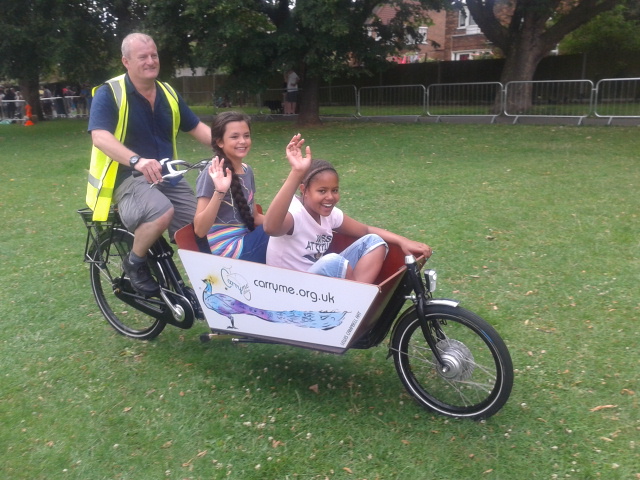
Somewhat resembling super-charged wheelbarrows, box-bikes – also known as bakfiets, from the Dutch – have a large sturdy box at the front of the bike, set low to the ground to give a low centre of gravity and therefore a steady feel. Coming in two- or three-wheeled versions, they are the classic cargo bike for transporting small children or light freight.
The trike versions have the largest capacity, the two-wheelers retain the nippiness and manoeuvrability of a classic bicycle. Both types benefit from the better handling that comes with pushing the load at the front of the bike rather than pulling it behind.
There are many different brands of bakfiets, but they all broadly fall into the categories of two- or three-wheeled versions, designed for children or freight. The two-wheelers can often come in long or short forms, and business-specific versions abound.
Famous Dutch brands include Azor Bakfiets, Gazelle and Babboe. From Denmark, the iconic Christiania is a high-profile three-wheeler and the sleek, sporty Bullit is a well-known two-wheeler. More recently, the British-built Boxer brand has arrived on the scene, with an emphasis on quirky, solid design.
Business-specific options include the ‘street-vendor’ type with integrated umbrella, the ice-cream bike, and ones fitted with a lockable box.
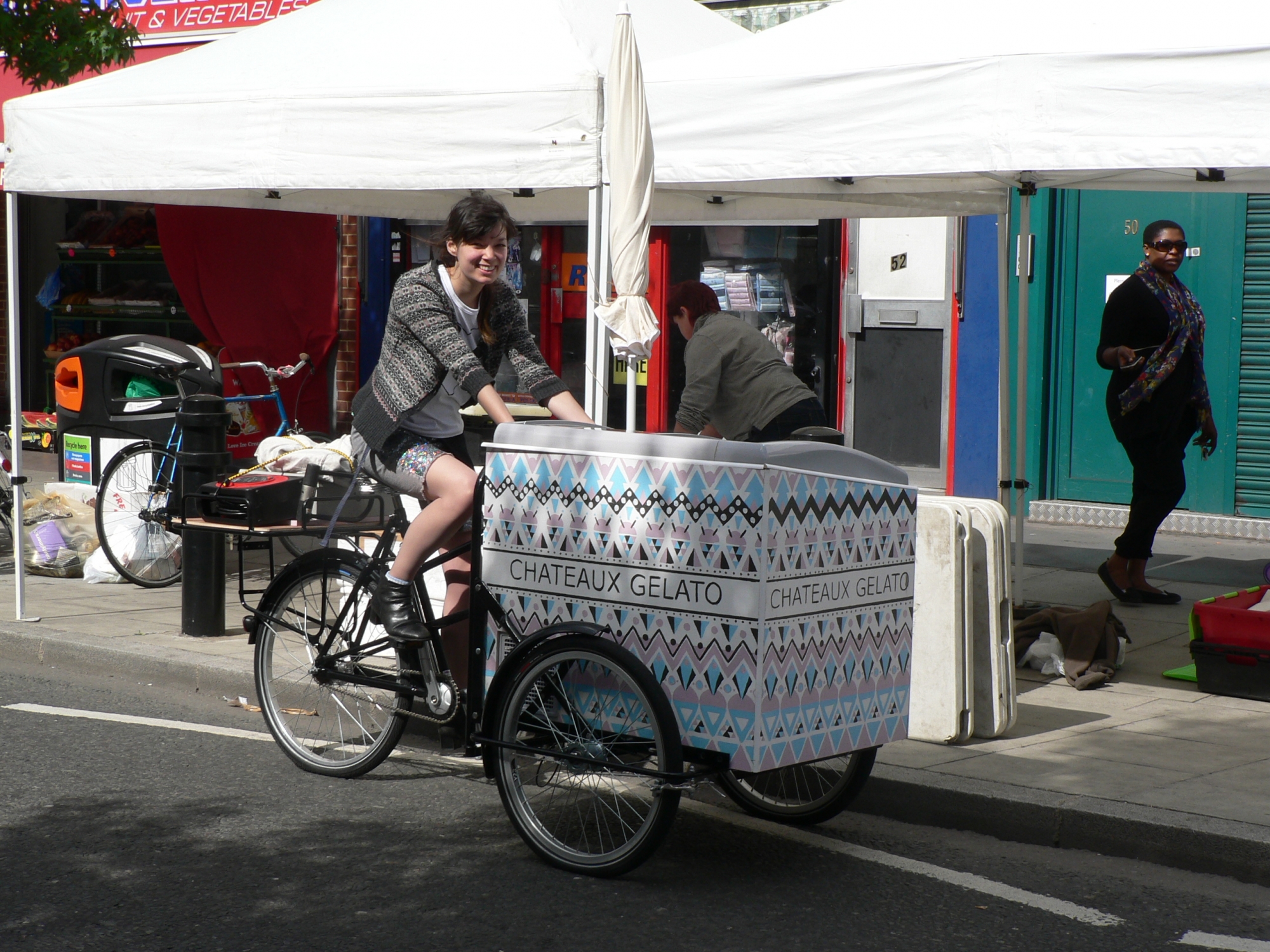
If you’re a mobile bike mechanic you might want to consider a bakfiets as they’re the perfect size for bike tools, common bike spares, a track pump and a bike stand.
‘Flat-bed’ versions of the two-wheelers are used for moving freight in towns for the ‘last mile’ delivery. They are affectionately known as ‘long-johns’, and those with customised boxes fixed on the flatbed can showcase the company’s logo and act as a great advertisement.
Some of the advantages the bakfiets have over your regular bike for carrying kids or stuff are obvious. The capacity of the box is far greater than panniers or child seats can offer, and you can switch easily between transporting children and shopping.
Other advantages are not so obvious. For instance, the only realistic way to carry babies by bike when they can’t yet sit up by themselves is in a baby carrier in a cargo bike box. Even newborns can be carried this way. The low centre of gravity and protective sides of the box give reassurance to parents.

Until you ride a box-bike you don’t realise what a difference it makes to be handling a specially designed, fully integrated vehicle, rather than a regular bike with child seats perched precariously that can make the bike unstable when you’re loading up, or panniers stuffed to the gills that give your bike a very weighty feel at the back.
Additionally, one of the greatest advantages when carrying children in a box-bike is that you can see and hear your kids in front of you, retaining the interaction and eye contact that can be lost on a longtail or tandem.
This easy feel and improved convenience comes at a cost. Prices start at more then£1,000 for the cheapest ones that are sturdily built, and can range up to over £3,000 for an e-assist trike. It is definitely not recommended to buy a super cheap one for under £1,000. They are not robustly built, and when carrying children, safety is your priority.
The good news is that a box-bike keeps its value, so you can sell it on after a few years and get up to two-thirds of the cost back. There is high demand for second-hand versions due to the relatively high purchase price, and if you try to keep it in good condition you will be thanking yourself that you made the investment.
This applies to most cargo bikes, as they are not yet widely sold in regular bike shops, and demand is rising.
Longtails
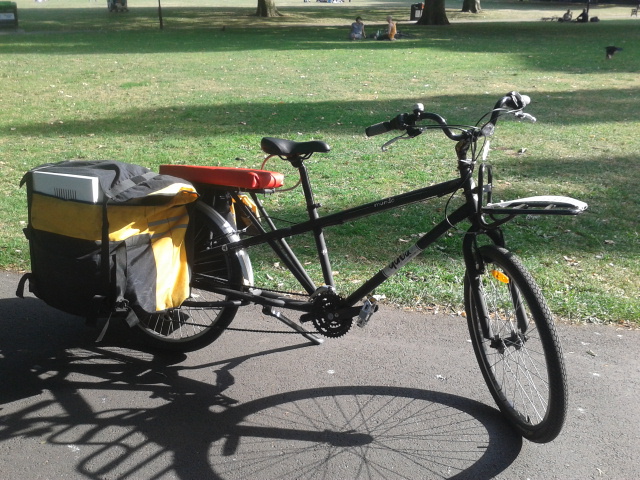
Longtails are like regular bikes but with longer ‘tails’. The back part of the bike frame is extended to enable a longer, sturdier back rack. With the right accessories you can even carry adult passengers on some brands, which gives an advantage over the smaller bakfiets-type cargo bikes which are really only designed for children.
Longtails are a practical option when you want to get the bike into the house or down the side of a passage by your property where a wider cargo bike might struggle. They also provide a familiar riding experience, being more or less the same as a normal bike but longer. When loaded up heavily, the handling might take a bit of getting used to, but the faster you go, the more stable it will feel.
It’s possible to convert some regular bikes into longtails, rather than buying a whole new bicycle. There are instructions to be found on the internet, but do be careful and ensure you know what you’re doing before you embark on such a project.
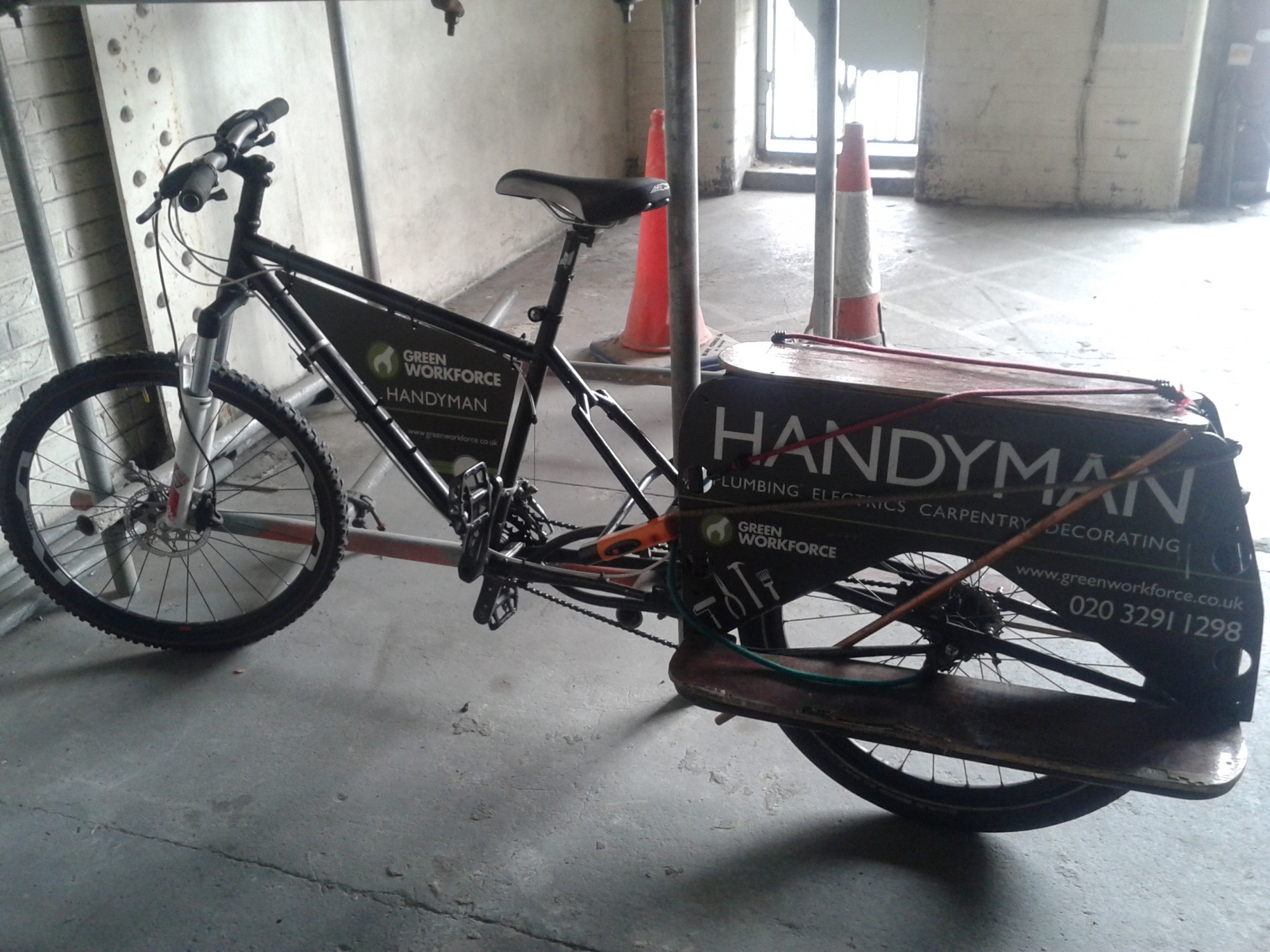
You will find that a fully integrated bike specially designed to be long and load-carrying has a more sturdy feel and better handling than a modified ‘normal’ bike.
Some brands to have a look at are Surly Big Dummy, the Kona Ute, and the Yuba Mundo.& Expect to pay upwards of about £900 plus accessories such as oversized panniers, running boards for passengers’ feet, and handles for little’uns to hold onto.
They’re great bikes for when the kids are older but not riding their own bikes, and they’re a fun way to give another adult a lift somewhere. But bear in mind that they’re not tandems, so you’ll be doing all the work.
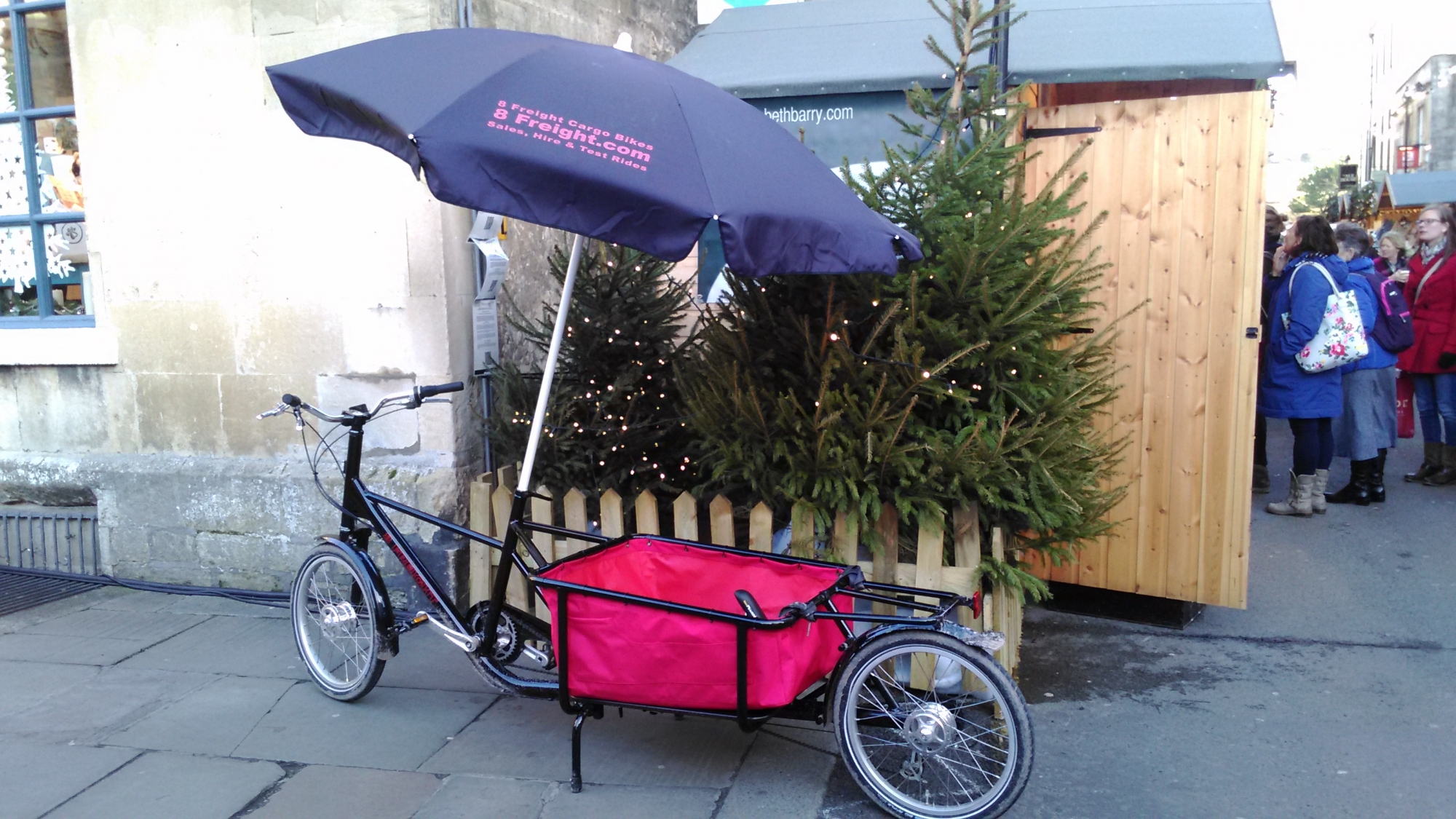
A great freight bike that’s almost a cross between a longtail and a bakfiets is the 8 freight, a classic British cargo bike designed by Mike Burrows, the man responsible for Chris Boardman’s world-beating Lotus bike in the 1990s. It has an extended ‘back end’ where the load is placed, like a longtail; but the basis of the loadbase is a box shape, like a bakfiets.
Designed to carry cargo and children, it is possible to carry both long items and bulky items, and you can just about fit an adult in the basket! From £1,895.
Pedicabs
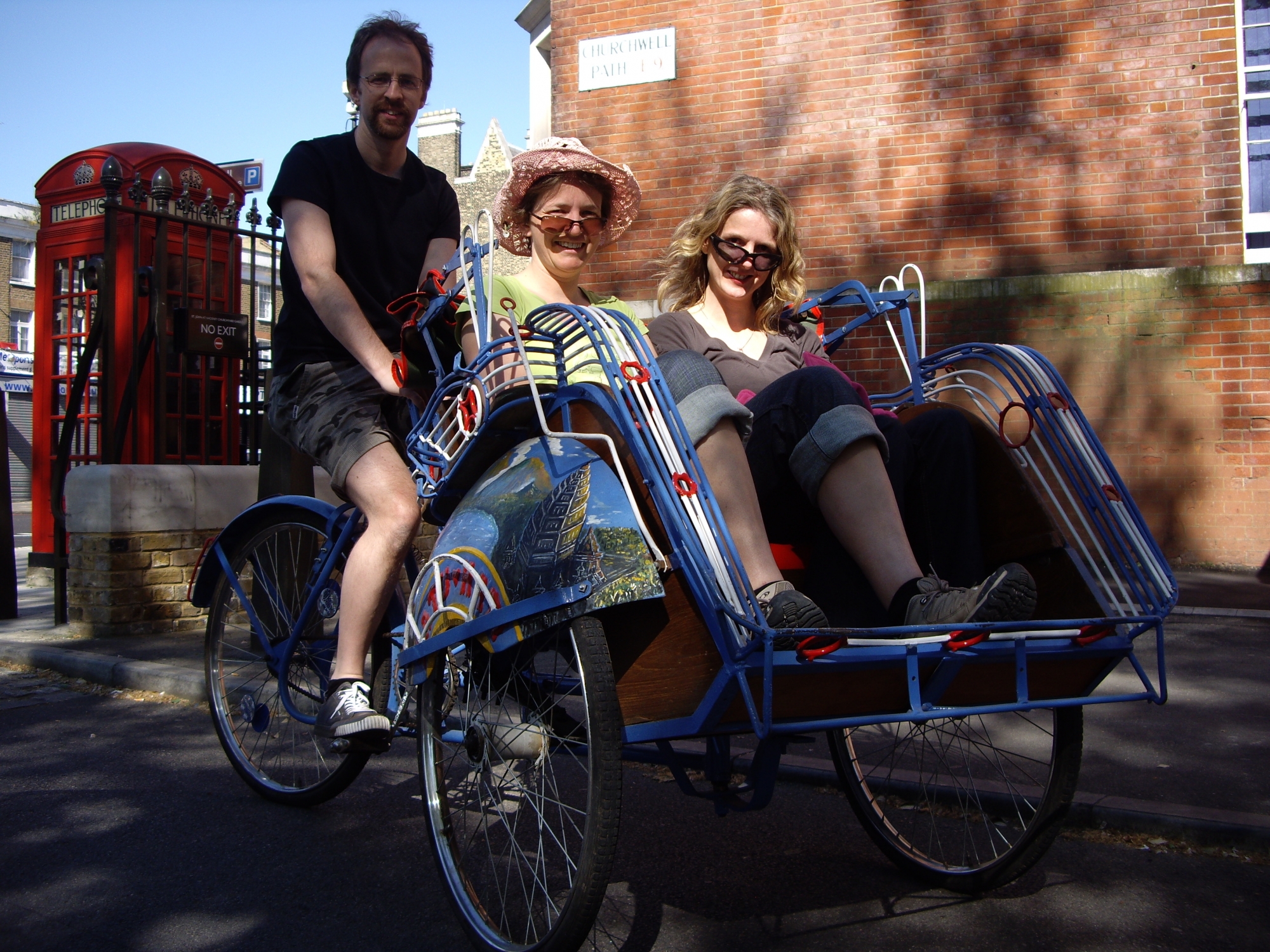
Most people think of pedicabs as rickshaws, famous throughout Asian countries, and more infamously in London’s West End. But versions are available of the classic massive trikes which are designed for freight.
The most iconic is the Cycles Maximus, which is available in a variety of options including flatbed and bespoke design. These trikes have the load at the back so feel different to the bakfiets style, but generally can carry heavier and bulkier loads – for instance up to 250kg plus rider and the vehicle itself. They are even available as mobile advertising hoardings.
Expect to pay several thousand pounds – prices are on request.
Other types of trike
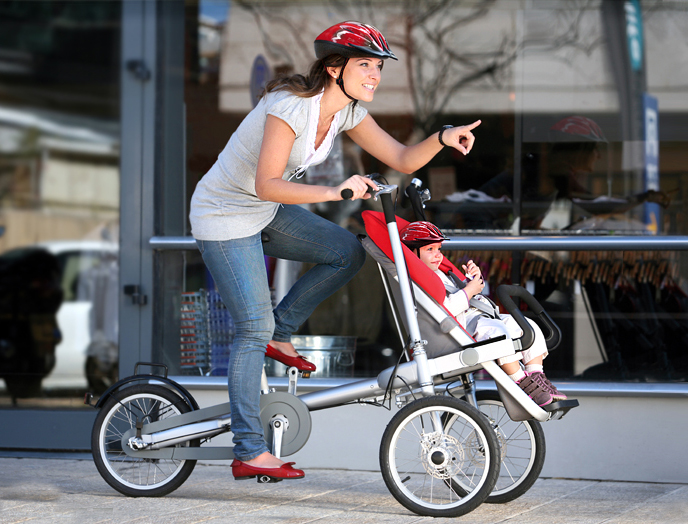
This is a separate category because there are some cargo bike-esque machines out there that don’t have a box, but are designed to carry passengers of some kind without being a classic ‘pedicab’.
The Zigo Leader is a trike which can be separated into small-wheeled bike plus stroller. It hasn’t got a box so it’s not a bakfiets, but it carries small children at the front bakfiets-style. It’s lighter than a box-bike and more compact, but with smaller wheels it may be slower than a conventional three-wheeler.
If storage is your limiting factor then this might be a good bet, although you will need to consider the faff factor of disassembling the machine every time you get home. The Taga Bike is similar, converting into a stroller, and even has a box-bike-style front version.
For both these brands you can buy different versions designed to carry one or two children, but they don’t include a back rack and the storage space for other items such as shopping, kiddie stuff or your child’s school chum coming home for tea appears very limited.
The Trikidoo was essentially a small trike with two wheels at the back instead of the front, above which were two passenger seats for young children and some storage space underneath. The company ceased trading in 2011 but sometimes they become available online second-hand.
A word about trikes

Some people are drawn to trikes because they are not so confident about the balance issues of handling a two-wheeled carg obike, especially when carrying children on busy roads. Trikes may appear to be an easier option because you can sit on them without having to balance them when you are stationary. But they are not easier to ride, just different.
It can take a while to get used to the unique way that they handle: you need to be careful that both of the parallel wheels stay at the same level, otherwise it will feel as if the trike is tipping. Speed cushions, raised ‘tables’ at side streets, and going round corners need to be handled with care.
Broadly speaking, a two-wheeler feels more stable the faster it goes, and a three-wheeler feels more stable the slower it goes. So if swiftness is a priority, a trike may not be for you.
It’s possible to get various different types of steering methods on trikes. The Nihola has a mechanism that steers via the front wheels without moving the box. The Bellabike has a rear-steering mechanism. Both of these options create a totally different riding feel.
Mini cargo bikes/porteur style
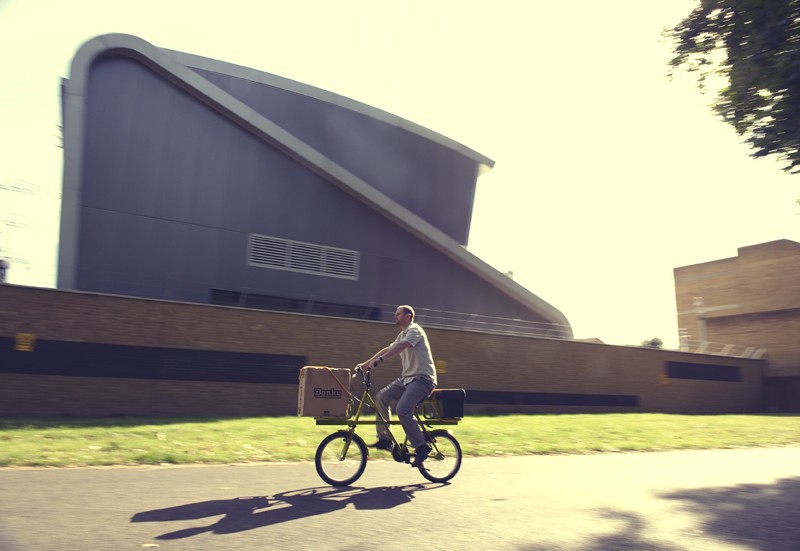
Finally, there are some load-bearing bikes out there that aren’t oversized but can still be pretty neat load-carriers. Traditionally called butchers’ bikes, these types are similar to regular city bikes but have large built-in front or back racks, often with one or more slightly smaller wheels to accommodate the load on top.
A British version is the Donky Bike, retailing at £499. This also has the advantage of small wheels, with the resultant low centre of gravity and short wheelbase (basically, it’s compact). Elephant Bike restores old Royal Mail delivery bikes to tip top condition, and when you buy one from £250 the company donates one to a social enterprise in Africa. As built, both of these bikes are only designed to carry freight, not kids.
Workcycles has a fantastic mini cargo bike called the FR8 (‘freight’) which has a lot of versatility. It has both a longer back rack, on which two child seats can be mounted, and an integrated front rack. Another child seat can be mounted between the rider and the handlebars. From £950 its price is very competitive with the longtail bikes, but similarly it’s not set up to carry young babies.
Storing a cargo bike
Storing outsized machines can be a challenge, especially in compact urban environments. Many cargo bikes simply don’t do steps. With their sturdy inflexible boxes you can struggle to manoeuvre bakfiets through hallways. An extra-long bike will have issues getting round tight corners.
If you have a garage then it’s easy, but in the inner city many people simply lock up their cargo bike in their front garden or even on the street. If you get high-quality locks, good insurance and a specially made cover, you won’t need to go through the hassle of trying to store it indoors.
“Treat it like a motorbike” is what I often say to customers.
Maintaining your cargo bike
Bear in mind that some bike shops won’t accept larger cargo bikes for repairs and servicing, especially if you didn’t buy it from them, and more so if you bought a cheap nasty one from the internet. They are awkward to work on and they take up lots of space in what are often cramped workshops.
If you choose one with moving parts that are protected inside chaincases, hub gears and hub-type brakes, you’ll find that it will need a lot less maintenance and will last a lot longer. Buy a cargo bike face to face and your dealer is likely to make an arrangement on at least your first service, plus decent warranties on the frame and parts for your peace of mind.
Do you really need a cargo bike?
Of course you do! Well, not necessarily, actually. It really is a good idea to decide whether you can carry your precious load using your existing bike without having to fork out on another one. You would also avoid the hassle of finding the space to store an outsized machine.
The classic Japanese Mamachari bikes are great at carrying young children while still being a similar size to a ‘regular’ bike. If you’re looking to change bikes anyway, they are great little run-around machines that won’t take up loads of extra space. They cost from about £325 second hand.
There are many trailers on the market which can do a great job of carrying shopping as well as small children. Pulling a load behind you is a very different feel to pushing it in front of you, and you’ll need to get used to the handling of an ‘articulated vehicle’.
You may not feel so happy about having small children out of sight behind you quite low down when travelling on roads with lots of traffic, but trailers are an option when you don’t have the space or the budget for a new bike. They’re great for leisure rides on traffic-free routes, and tagalong additions are the next step for when your child is ready to do some pedalling. From about £90-£300.
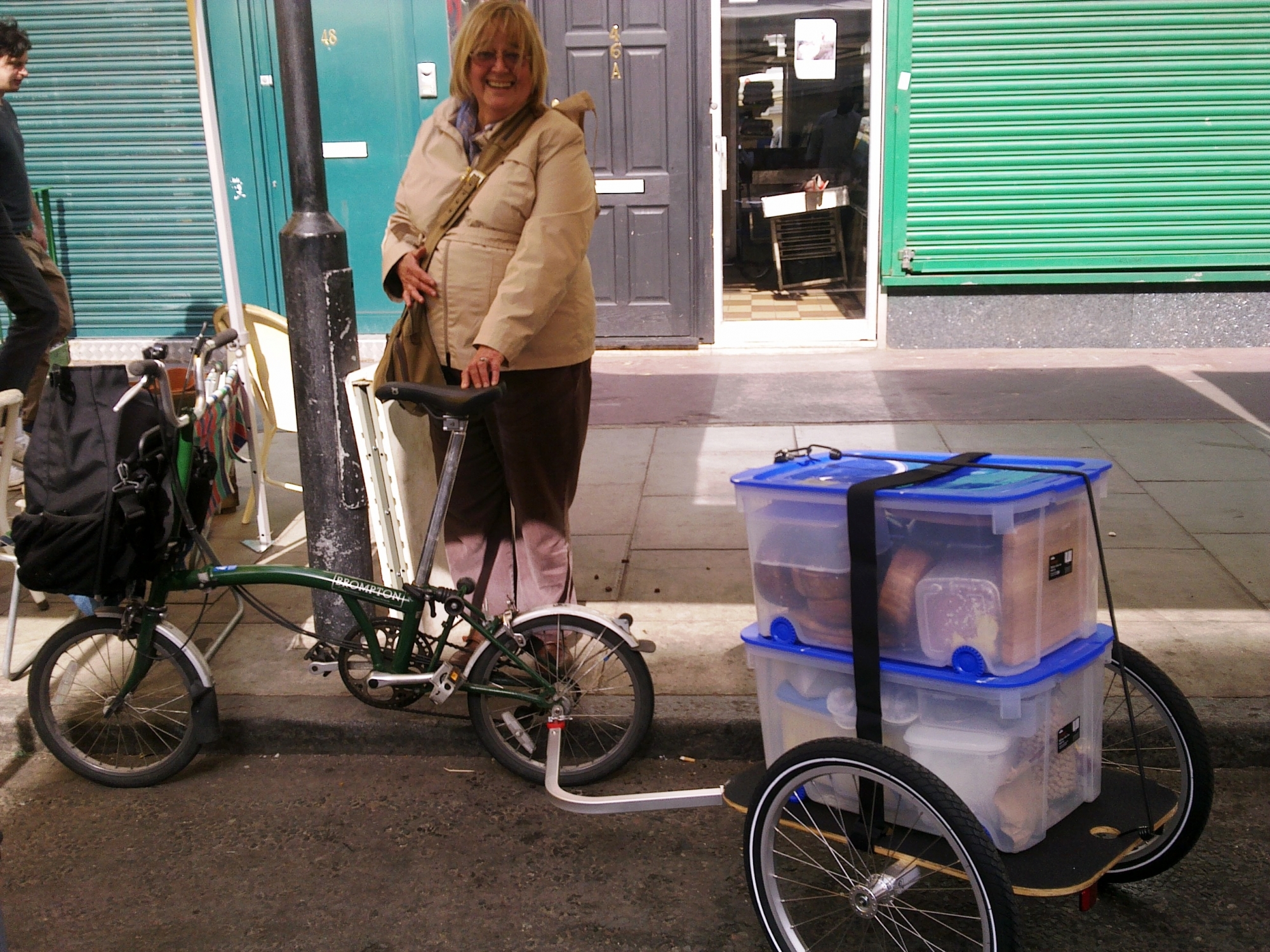
You can buy flatbed trailers that come apart easily for storage. The Carry Freedom Y-frame range, for example, costs from about £200. These can’t carry children but are great for carrying things like plants which might get crushed in a pannier, or toolkits if you are a tradesperson who doesn’t always want to use your car. You can even carry pets on them with the right box.
Alix Stredwick is a Cycling UK member and the founder of CarryMe Bikes, a social enterprise in east London renting out and selling cargo bikes and running projects to help people access cargo bikes.

